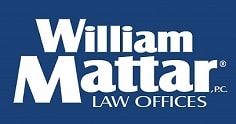How to Apply for No-Fault Insurance
New York is one of the few states with No-Fault insurance coverage—which means your motor vehicle accident-related expenses may be covered no matter who was at fault for the accident.
It’s important that you apply for your No-Fault benefits as soon as possible. In fact, your application must be submitted as soon as possible but no later than 30 days after the date of your accident.
Completing Your No-Fault Application
To get started with your No-Fault benefits application, you should:
- Contact the right insurance provider
Depending on your role in the accident, you may either need to contact your own insurance provider or the insurance provider of the person who hit you. William Mattar Law Offices may be able to help you determine which insurance company will provide No-Fault insurance coverage for your accident. - Complete an Application for No-Fault Benefits (Form NF-2)
Download Form NF-2 or have your insurance provider mail it to you. Fill out each section with accurate and up-to-date information. If you have questions about completing Form NF-2, our car accident injury lawyers may be able to assist you. - Proofread and mail your application
Read over your application to make sure that all the information is correct. Then, make a copy of the application for your records and mail the original to your insurance company or the insurance company of the vehicle that hit you.
You may be required to provide additional information with your application, such as your lost wages information. To report your lost wages, have your employer complete and submit an Employer’s Wage Verification Report (page 15) to the appropriate insurance company as soon as possible but no later than 90 days from your accident date.
Have Questions? We Want to Help
At William Mattar, our experienced personal injury lawyers know that the rules of applying for No-Fault insurance coverage can be confusing. That’s why we’ll do our best to guide you through this process. Call us at (844) 444-4444 or fill out a free initial consultation form to get our experienced law firm on your side today.

















